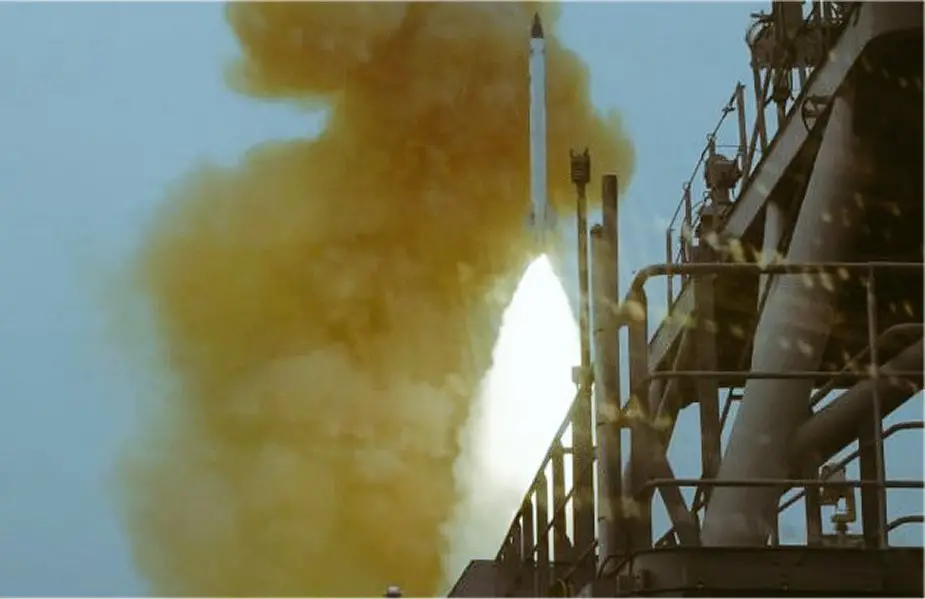Breaking news
India successfully demonstrates naval-based BMD system.
According to information published by the Indian government on April 25, 2023, Defence Research and Development Organisation (DRDO) and Indian Navy successfully conducted a maiden flight trial of sea-based endo-atmospheric interceptor missile off the coast of Odisha in the Bay of Bengal.
Follow Navy Recognition on Google News at this link
 Flight trial of sea-based endo-atmospheric interceptor missile. (Picture source: Indian MoD)
Flight trial of sea-based endo-atmospheric interceptor missile. (Picture source: Indian MoD)
The Indian Ballistic Missile Defence Programme was initiated in 2000 to develop and deploy a multi-layered ballistic missile defence system to protect India from ballistic missile attacks from its neighboring countries, primarily Pakistan and China.
The programme is a double-tiered system consisting of two land and sea-based interceptor missiles, namely the Prithvi Air Defence (PAD) missile for high-altitude interception and the Advanced Air Defence (AAD) Missile for lower-altitude interception.
The Indian BMD programme also includes an overlapping network of early warning and tracking radars, as well as command and control posts. The system is designed to intercept any incoming missile launched from 5,000 kilometres away.
The PAD missile was successfully tested in November 2006, followed by the AAD in December 2007. With the successful test of the PAD missile, India became the fourth country in the world to have developed an anti-ballistic missile system, after the United States, Russia, and Israel.
The development of the BMD programme involved several public and private companies, including Ordnance Factory Board, Bharat Electronics Limited, Bharat Dynamics, and others.




























